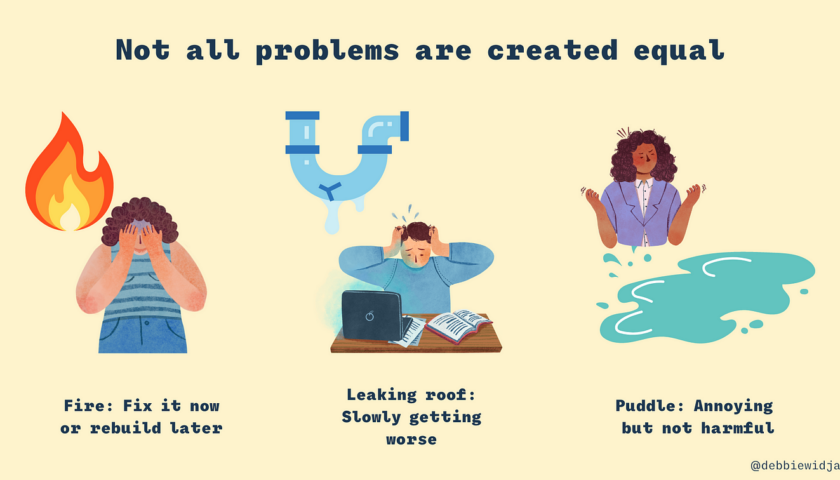Studying for a multiple-choice exam requires a special method of preparation which is distinctly different from an essay exam. Multiple-choice exams ask a student to recognize a correct answer among a set of options that include 3 or 4 wrong answers (called options/distracters ), rather than asking the student to produce a correct answer entirely from his/her own mind.
Students commonly consider multiple choice exams easier than essay exams. Perhaps the most obvious reasons are:
- The correct answer is guaranteed to be among the possible options.
- Many multiple-choice exams tend to emphasize basic definitions or simple comparisons, rather than asking students to analyze new information or apply theories to new situations.
- Because multiple choice exams usually contain many more questions than essay exams, each question has a lower point value and thus offers less risk.
Despite the general belief, multiple choice exams can actually be very difficult. The reasons are:
- Multiple-choice exams contain many questions, they force students to be familiar with a much broader range of material than essay exams do.
- Multiple-choice exams also usually expect students to have a greater familiarity with details such as specific features, properties, functions, types, comparison, names, or vocabulary than most essay exams do. Students cannot easily “bluff” on a multiple-choice exam.
- Finally, because it is much more difficult for a student to select a correct answer amongst answers which are relatively close to correct answer. Students often face higher risks due to unintended ambiguity. [However in such cases students have a choice to appeal with Civil Aviation Agency]
Preparing for Multiple Choice Questions
- Begin studying early. Multiple-choice exams tend to focus on details, and you cannot retain many details effectively in short-term memory. If you learn a little bit each day and allow plenty of time for repeated reviews, you will build a much more reliable long-term memory. Vayu Academy @ www.vayuacademy.com provides PREP papers for efficient and effective comprehension and understanding and TEST papers for the review of student comprehension and progress.
- Make notes. This seems like a no-brainer, but actually making notes while studying will increase your concentration, focus and will help you immensely once exam time comes. Don’t fall into the trap of thinking you’ll just “absorb” knowledge; be an active learner. Pay special emphasis on keywords and phrases. Review your notes daily, right before you start a new session. This will help reinforce the information you learned.
- Plan review sessions beginning at least a week in advance of each exam. Ideally, you should do several mini-reviews well in advance, rather than trying to cram everything into one mega session. Appear in a mock exam to review your knowledge and comprehension. Test Papers are part of every package provided by Vayu Academy at http://vayuacademy.com/Packages for self-assessment.
- Concentrate on understanding multiple functions, uses, advantages, disadvantages, and properties that form natural sequences or groupings. Look for similarities and differences that might be used to distinguish correct choices from distracters on an exam.
- Brainstorm possible questions with several other students who are also taking the course. Join an online group to share and compare notes or explain things the other one might not understand. Working with other people can help you cover gaps in your own knowledge and also help you remember more information, since you may have to explain things to them or have conversations about the topic. ATPL CPL Question + VIVA + interview @ http://www.facebook.com/groups/1143630835666170/ is one such group that you can join to seek and render help.
Taking the Test
- Look Over the Test and Pace Yourself. When you get into examination hall, first fill in all the details like your computer number, roll number and other details provided to you at the centre. Recheck all the details displayed on the screen or answer sheet before you proceed. When you begin the exam set a pace with which you can finish 30 -40 questions in an hour. That way, you’ll have a little time at the end to check for correcting mistakes or attempting skipped questions or misread items.
- Take Short Breaks. Try taking a few breaks during the exam by stopping for a moment, shutting your eyes, and taking some deep breaths. Periodically clearing your head in this way can help you stay fresh during the exam session. Remember, you get no points for being the first person to finish the exam, so don’t feel like you have to race through all the items — even two or three 30-second breaks can be very helpful.
Answering Multiple Choice Questions
There are many strategies for maximizing your success on multiple choice exams. The best way to improve your chances, of course, is to study carefully before the exam. There is no good substitute for knowing the right answer. Even a well-prepared student can make silly mistakes on a multiple choice exam, however, or can fall prey to distracters that look very similar to the correct answer. Here are a few tips to help reduce these perils:
- Before you begin taking the exam, enter all pieces of required information on your screen or answer sheet like computer number, roll number etc..
- Always read the question carefully and try to anticipate the correct response before you are distracted by seeing the options that has been provided. Mark the key words and then, read the options.
- If you see the response that you anticipated, read on to check and to be sure that none of the other responses is better.
- If you cannot answer a question within a minute or less, skip it and plan to come back later. One of the common mistakes student make is they spend too much time on one or two difficult questions.
- Be sure that you have filled the appropriate bubbles or clicked against the appropriate option carefully.
- Take the time to check your work before you hand in the answer sheet or click ‘submit’ for online exams.
- If you do not see a response that you expected, then consider some of the following strategies to eliminate responses that are probably wrong. None of these strategies is infallible, dependable of full proof. Examiners will avoid writing questions for which these strategies work, but you can always hope for a lapse of attention.
- What To Do If More Than One Answer Seems Correct.
- Ask yourself whether the answer you’re considering completely addresses the question. If the test answer is only partly true or is true only under certain narrow conditions, then it’s probably not the right answer. If you have to make a significant assumption in order for the answer to be true, ask yourself whether this assumption is obvious enough that the examiner would expect everyone to make it. If not, dump the answer overboard.
- If you think an item is a trick question, think again. Very few examiners would ever write a question intended to be deceptive. If you suspect that a question is a trick item, make sure you’re not reading too much into the question, and try to avoid imagining detailed scenarios in which the answer couldbe true. In most cases, “trick questions” are only tricky because they’re not taken at face value.
- If, after your very best effort, you cannot choose between two alternatives, try vividly imagining each one as the correct answer. If you are like most people, you will often “feel” that one of the answers is wrong. Trust this feeling — research suggests that feelings are frequently accessible even when recall is poor (e.g., we can still know how we feel about a person even if we can’t remember the person’s name).
- What To Do If You Do Not Know The Answer.
- Responses that use absolute words, such as “always” or “never” are less likely to be correct than ones that use conditional words like “usually” or “probably.”
- “Funny” responses are usually wrong.
- “All of the above” is often a correct response. If you can verify that more than one of the other responses is probably correct, then choose “all of the above.”
- “None of the above” is usually an incorrect response, but this is less reliable than the “all of the above” rule. Be very careful not to be trapped by double negatives.
- The longest response is often the correct one, because the instructor tends to load it with qualifying adjectives or phrases.
- Look for verbal associations. A response that repeats key words that are in the question is likely to be correct.
If all else fails, choose response (b) or (c). Many instructors subconsciously feel that the correct answer is “hidden” better if it is surrounded by distracters. Response (a) is usually least likely to be the correct one.



